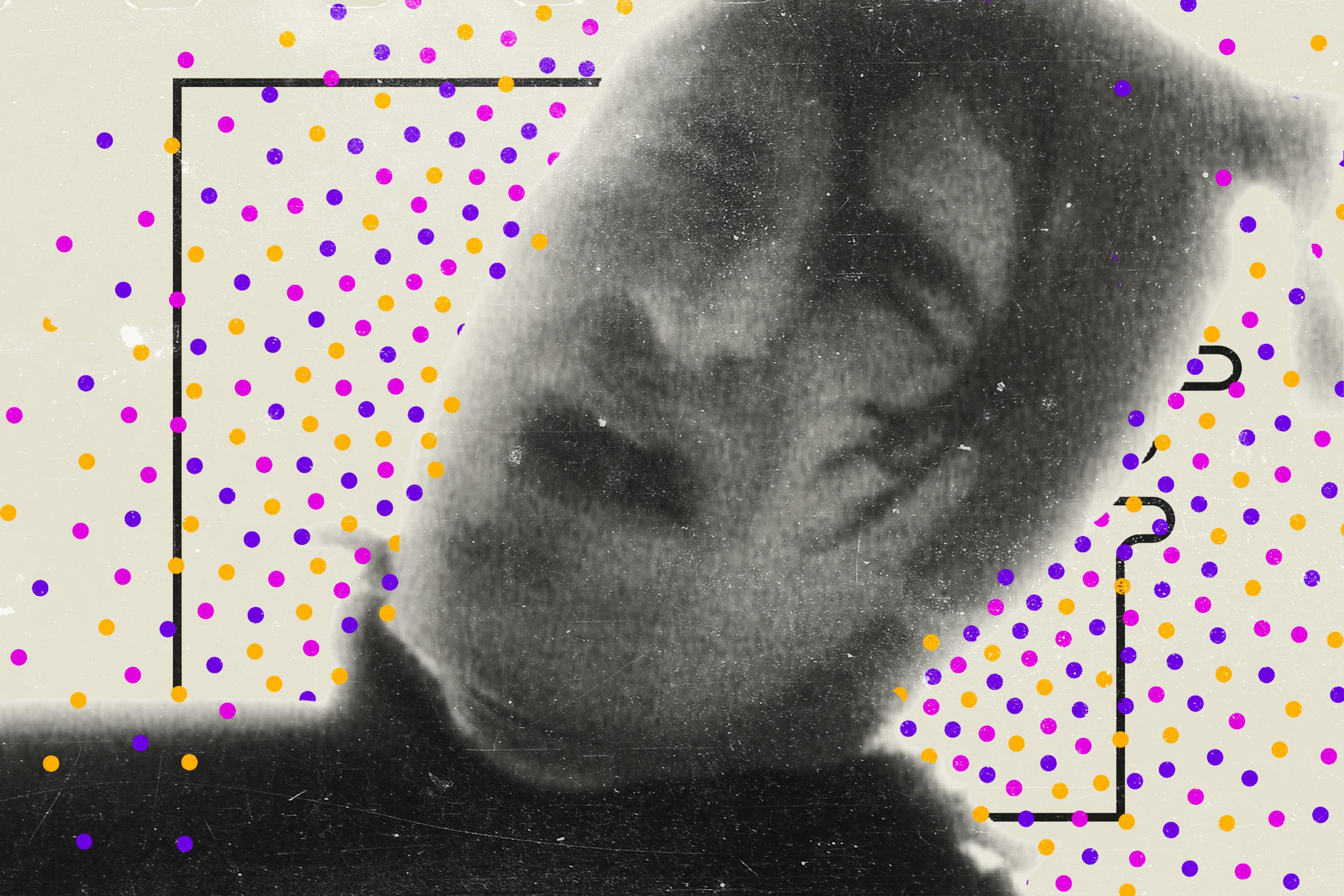
Grunge. Wu-Tang Clan. Radiohead. “Wonderwall.” The music of the ’90s was as exciting as it was diverse. But what does it say about the era—and why does it still matter? 60 Songs That Explain the ’90s is back for 30 more episodes to try to answer those questions. Join Ringer music writer and ’90s survivor Rob Harvilla as he treks through the soundtrack of his youth, one song (and embarrassing anecdote) at a time. Follow and listen for free exclusively on Spotify. In Episode 64 of 60 Songs That Explain the ’90s—yep, you read that right—we’re breaking down Jane’s Addiction and their hit “Been Caught Stealing.”
In the early ’90s, in the robust prime of the Alt-Rock-Radio Era, I did not entirely grasp the importance of Jane’s Addiction to the very existence of the Alt-Rock-Radio era. I was too busy being just slightly afraid of this band. Jane’s Addiction formed in 1985, amid the myriad vistas of Los Angeles, California. Classic lineup, your drummer is Stephen Perkins. Your bassist is the great Eric Avery. Your guitarist, a shining example of the Live Más mentality (look it up) is Dave Navarro, and your front man is Perry Farrell. I do not, in general, subscribe to the You Had to Be There philosophy of rock ‘n’ roll history, where a band’s true appeal is fundamentally unknowable if you weren’t there, if you weren’t a young person living in the band’s hometown at the precise moment the band blew up. I’ve spent like 48 hours total in Seattle, in my life, and that as an adult, and pretty much the only place in Seattle I’ve ever eaten was a Jimmy John’s downtown, but I’ve listened to 200,000 hours of rock music from Seattle in my life, and I get Seattle, absolutely. I know Seattle. Trust me. Nobody needs that much context, really. I got no idea where Tracy Bonham is from—it’s Boston, I just looked it up, that totally makes sense—but the appeal of “Mother Mother” was immediately apparent to me all the same.
But I do suspect that the L.A. of it all—the mid-’80s L.A. of it all—means more to the Jane’s Addiction legacy than usual, with these sorts of things. This band meant something very different to a kid in mid-’90s Ohio than it meant to a kid in mid-’80s Los Angeles. OK, so mid-’80s L.A. Black Flag, X, the Go-Gos, the Minutemen (D. Boon rest in peace), Christian Death, the Dream Syndicate, Fishbone, Mötley Crüe, and the Red Hot Chili Peppers. Jane’s Addiction’s first album, technically, is a live album, called Jane’s Addiction, that came out in 1987. For your reference, here’s what the Red Hot Chili Peppers sounded like in 1987.
That’s the song “Love Trilogy,” from The Uplift Mofo Party Plan. That part’s the third part of the trilogy. Listen, I took very detailed notes during my deep dive into the Red Hot Chili Peppers discography, and My love is my dick in my hand is the general tenor of the notes I took. Who is the bigger hornball? The famous hornball rock band, or the mild-mannered civilian guy cherry-picking the Hornballest, the Hornballerest, the Hornballiest lines from the hornball rock band’s catalog? Think it over. Anyway, for your reference, here’s what Jane’s Addiction sounded like in 1987.
That song’s called “Whores.” What’re ya gonna do? Perry Bernstein was born in Queens in 1959. His family moved to Miami when he was a kid. There’s a great SPIN magazine oral history cover story on Jane’s Addiction, from 2003, their big reunion year, where one of Perry’s friends describes Perry’s father as “this Jewish mobster guy.” Perry himself says of his father, “He was one of those guys walking around Miami Beach in the ’70s with a FILA headband and a bikini bathing suit with gold around his neck.”
When Perry was a little kid, his mother took her own life; at 17, he ran away to California, quote “with a surfboard, some art supplies, an ounce of weed, and one phone number.” Whose phone number, I wonder. He lives in a van on the beach. He gets a gig impersonating David Bowie, Mick Jagger, and Frank Sinatra at a club in Newport Beach. He sings for a Goth band called Psi Com. They flame out. He changes his name to Perry Farrell, which is a play on the word peripheral. Peri Pheral. He meets Eric Avery, who’s already got a ton of rad bass lines. He meets drummer Stephen Perkins and hotshot guitarist Dave Navarro, who’d both been playing in a metal band called Dizastre. Write that band name down and just look at it for a while, would ya? D-I-Z-A-S-T-R-E. Drop it in Microsoft Word and put it in different fonts.
The fellas form Jane’s Addiction. Jane is a real person, a housemate of Perry Farrell’s at the time, and Jane had a real drug addiction. Perry’s in his late 20s; the rest of the band’s in their very early 20s. Direct quote from Dave Navarro, on his general experience of this period: “What do you want me to say? There was always five pounds of heroin, all the booze and coke you wanted, all the girls you wanted—all looking for nothing but guys in bands. And I wasn’t even old enough to legally drink yet.” End quote. The whole band’s larger ecosystem, it strikes me now as an “If I had the sex and drugs, I could do without the rock ‘n’ roll” situation, but what do I know, I wasn’t there. I’m just reading about it now and firing off quotes from This Is Spinal Tap.
The band plays a bunch of rad L.A. clubs with names that mean something to you if you lived in L.A. at the time, and they don’t get kicked out of all of them. Direct quote from Perry Farrell about his performing philosophy in this period: “As long as I could whip out my dick, I knew I was alive.” The live Jane’s Addiction album from ’87 includes covers of “Rock & Roll” by the Velvet Underground (Perry sounds like Mick Jagger) and “Sympathy for the Devil” by the Rolling Stones (Perry sounds like Axl Rose). It also includes an early version of the song “Pigs in Zen,” which to my mind is ur-Jane’s Addiction song title, the spirituality inextricable from the sleaze, so on and so forth. Dave Navarro’s rad guitar solos in this early version exemplify the Live Más lifestyle. That is absolutely my last reference to the Live Más lifestyle, I assure you.
If you’re into this band for the rad bass lines—we are not the majority shareholders, in the Jane’s Addiction fandom, but we’re a proud subculture all the same—I would direct you to the song called “I Would for You,” which is animated entirely by the chemistry between Perry Farrell and Eric Avery, a chemistry that’s gonna get super fucked up very soon, but yeah for now it’s fantastic and will last forever.
That’s as tender and conventionally lovely as Perry Farrell’s voice gets, though of course, nobody seeks out Perry Farrell for conventional loveliness. It’s a trip though to revisit this live album now—to travel back to mid-’80s L.A., when Jane’s Addiction were local libertine heroes and not much else—with the knowledge that this was the song that would make these dudes internationally famous.
“Jane Says” is about that Jane again. Her name is Jane Bainter. Sergio was a drug dealer she knew who was manipulating her. Her parents were divorced but her mother had remarried and moved to a house in the South of Spain, and Jane had a standing offer to go live there too if she could clean up, hence I’m going away to Spain and I’m gonna kick tomorrow.
By the time that live Jane’s Addiction record comes out, they’re hot shit, they’re signed to a major label, and their studio debut Nothing’s Shocking comes out in 1988, and the studio version of “Jane Says”—which you can still hear today, 150 times a day (that’s a real number) on any self-respecting radio station with “rock” anywhere in their name—quickly becomes what producer Dave Jerden describes as “the ‘Stairway to Heaven’ of modern rock.”
To hear the full episode click here, and be sure to follow on Spotify and check back every Wednesday for new episodes on the most important songs of the decade. This excerpt has been lightly edited for clarity and length.

